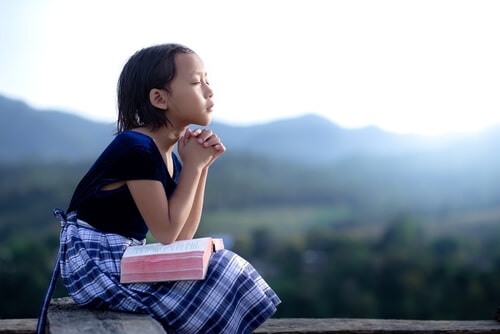Are you interested in learning how to differentiate between Japanese, Chinese, and Korean? In this article we will focus on the basic features of these unique cultures, plus how they can be differentiated from each other. So let’s dive in!
Embark on a cultural discovery as we guide you through the subtle and distinct features that differentiate Japanese, Chinese, and Korean languages, writing systems, and customs.
Understanding these differences is crucial for appreciating the unique heritage of each nation and for navigating the rich tapestry of East Asian cultures with respect and insight.
Page Contents
How To Differentiate Between Japanese, Chinese, And Korean?
Difference in Japanese, Chinese, and Korean Language
The first thing that distinguishes one culture from another is the language barriers between them. Did you know that a person’s language and way of speaking says a lot about their culture?

The Japanese language consists of only 5 vowel sounds and around 100 different syllables with very few variations.

Each word either ends in a vowel or “n,” so you can pick it up very easily even though you have not learnt the first word.
On the other hand, Mandarin contains multiple vowel sounds for each English equivalent, and people seem to raise and lower their intonation and tone increasingly, and combine consonants.
Korean and Japanese share many similar sentence structures and words. Korean have a total of 10 different vowels and 19 consonants.

They do have a simple vowel and syllable system similar to Japanese with an alphabet called “Hangeul” which makes it much easier to read and write.
- Related: Shiatsu Massage in Japan
Difference in Physical Features Between the Japanese, Chinese and Koreans
Although it can be a little challenging to differentiate these three cultures in terms of their face and other physical attributes, there are ways on how you can identify their nationality by just their features.
According to research, most Japanese people have an oval or longer facial structure than the other two nationalities. They also have lower cheekbones, they have eyes tiled upwards and more pronounced noses.
They have an average height of 1.69 meters with hair mostly covered at the forehand and curved at the end.
Chinese from the North generally tend to have paler skin, small noses and eyes with square-ish faces. While those from the South have darker skin, broader noses, rounder face and eyes.

They have an average height of 1.68 meters with combed and wavy hair. Most Koreans have really smooth and light skin. They also have noticeably higher cheekbones.
Their facial structure is also rounder, with small but long noses and small eyes.They have an average height of 1.71 meters with long hair pulled back.
Difference in Fashion & Style Amongst the Japanese, Koreans and Chinese
When you consider their appearance in everyday life, the fashion and clothing styles between the three countries are very different.
Modern-day Japanese men and women typically prefer wearing tight pants and dresses and skirts respectively. They are also known for their “kawaii” (cute culture) in fashion which is a very prominent way of identifying someone from Japan.
On the other hand, Koreans are known to choose brighter colors , bold designs and lovers of brand names and fashion trends. You can see a lot of young people in Korea with unusual hair colors and unique style combinations.
Finally, the Chinese take a more Western approach to their clothing and style. They tend to care about wealth and wear expensive jewellery, gold and fashion.
Difference in Mannerisms Between The Japanese, Koreans and the Chinese:
While you may find a few similarities, you will be able to identify if a person was raised either in Japan, China, and Korea as well. Keep in mind that when it comes to gestures, bowing down has evolved in each country over the years.
For example: In Japan and in Korea, greeting one another with a slight bow while a deeper bow is done in more formal situations. In China, a formal handshake with a slight head nod has actually become a common greeting.
In Japan and Korea , people avoid yelling or making noise especially in public places. Chinese people do not seem to have the cultural custom of quietness so you may find them laughing and raising their voices.
Difference in Culture Between The Japanese, Koreans and Chinese:
Also known as ‘The land of the rising sun’ and home to the anime gods, Japan is known for its interesting culture with highly patriotic citizens who are world-renowned for their discipline and hard work.
The Japanese are also respectful individuals who pay great attention to traditions.When you think of Korea, focus on the fact that South Koreans have successfully turned their country into a highly-developed one with their forward-mindedness and their ability to innovate quickly.
They have a need for perfection and are very competitive in nature and this can be seen in the number of plastic surgeries done in the country in order to achieve the perfect appearance.
The Chinese have traditions and customs that vary depending on the location. But one thing they have in common is their spiritual history which has influenced its traditions.
The duty of each family member is to value traditions and uphold the honor of the family name.
Difference in How Japanese, Chinese, and Koreans Do Their Makeup:
Most females in Japan and South Korea wear makeup regardless of age and occupation.This is normally accepted starting from high school age as it is
necessary courtesy for them to show respect.
However, makeup is highly restricted in Chinese high schools and uniforms are designed like sportswear to help students concentrate more on their studies and avoid comparison of appearance at an early age.
It is also very common to see South Korean And Japanese school boys or girls wearing shorts or skirts showing off their knees during the winter, this does not happen in China.
But in recent times, you can see Chinese females also pursuing beauty and fashion. Make-up is also popular among Korean and Japanese boys but in China, it is disliked and considered girly.
Difference in Food Between The Japanese, Chinese and Koreans
Kimchi, the most famous Korean food, is mostly spicy, usually eaten using a spoon, fork, and metal chopsticks so they don’t get damaged by fire when they do a Korean barbecue.
Japanese people love fish and sushi and will be seen using very thin chopsticks made of bamboo since it is easier to pick bones from fish while eating.
A Chinese staple meal consists of rice, noodles or steamed buns, vegetables and meat dishes and people eat using chopsticks for solid foods and ceramic spoons for soups and congees.
Difference in Religion and Religious Practices Between Chinese, Japanese and the Koreans
Japan’s native religion is Shinto with most of the holidays based on Shinto rituals. The Emperor of Japan has the highest authority in Shintoism, and more than half of the population in Japan believe in Shintoism in some way. You will find many Anime and Japanese cartoons greatly inspired by Shinto as well.
On the other hand, Christianity is the major religion in South Korea. Other religions followed in the country include Shamanism, Confucianism and Buddhism. The Chinese people practice Taoism, Confucianism, Buddhism, Catholicism, and Islam.

Difference Between Japanese, Chinese, and Koreans: FAQs
How similar are Chinese, Korean and Japanese languages?
-It is quite fascinating to know that there is plenty of similarity in the vocabulary between these three languages because Japanese and Korean have Chinese roots. According to many linguists, 50% of Japanese words and 60% of Korean words come from Chinese. You will also find some striking similarities between Korean and Japanese grammar and word order.
What is one of the main things found in all three cultures?
-A common socio-cultural element seen in all these three cultures is a strong sense of respect for the elders.In Japan, the respect-for-the-Aged day or keirou no hi is celebrated. An important element of Chinese Confucianism that spread up to Korea is Filial piety.
What is the hierarchy in these three countries?
–All these countries have a relatively high context culture so there will be more ambiguity and uncertainty in your communication. They also have great respect for the hierarchy of authority and status which can be seen in the relationships in the family, at offices, at schools, and even between two genders.
What about in terms of education?
-These three countries have a similar education system which is based on the ancient Civil Service Examination system. The college entrance exams are a very important event for any student’s career in these three countries because it can decide and change their social class in the future.
Conclusion:
After analyzing the above differences between the cultures, you will find it easy to see the uncountable differences between the Japanese, Chinese and Korean.
So, before you quickly assume where a person is from, take a second to remember that each person comes from a unique country with their own incredible culture, history, and religion that deserves to be distinguished from one another.
You can always search for quizzes on the same subject to test your knowledge and challenge yourself.
Thank you for reading our article, feel free to drop your comments below. Tell us what is the easiest way for you to differentiate between the above cultures?





